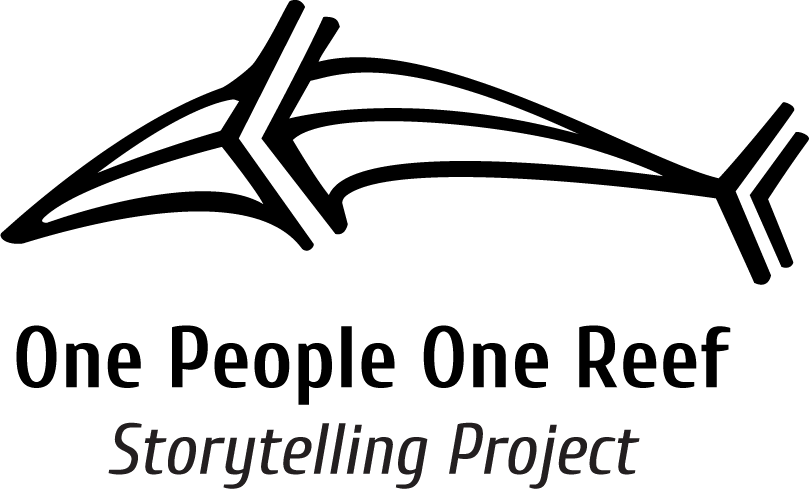The first part of the project booklet is a selection of seven of the many foundational myths of Ulithian culture, as told by elders from each of the four inhabited islands of Ulithi Atoll in June 2018. The second part is a new story that weaves together elements found within the seven Ulithian stories with contemporary lessons about the value of traditional management rules and coral reef science.
The traditional storytelling sessions took place during One People One Reef and Bluecology’s 2018 Youth Action Project, where participants listened to the stories, then helped transcribe and translate them into English. This storytelling project was a part of One People One Reef’s broader mission as a group of communities and scientists working together to keep the reefs, culture and people of the Micronesian Outer Islands healthy.
The title of the collection: “Titi Mata Mayomayo!” translates from Ulithian as “Wake up sleepyhead!” and is often said at the end of a nighttime storytelling session when a listener has drifted off to sleep. It was chosen here as a call to action to the younger generations to wake up to the challenges facing their community.
THE TRADITION OF STORYTELLING
Storytelling is an integral part of the tradition and culture of the people of Ulithi Atoll and across the Yap outer islands. The passing down of knowledge and history through stories was an event that took place in the evening after families had shared a meal. At this time, there was little else to do once the sun had set because there was no light apart from the cooking fire or a shining moon. Storytelling was an instructive form of entertainment and an interactive way for children to learn from their elders about all aspects of life. Children were encouraged to model the things they learned from the stories, such as good behavior and respect for natural resources. This was how children showed they had earned the privilege of listening to more stories. For this reason, many of the stories were designed to be told multiple times, with a change in emphasis when teaching moral values, or scaffolded information added in order to build upon knowledge previously taught.
THESE STORIES EVOLVE OVER TIME AND EVERY TELLING IS UNIQUE
The stories in this collection are told over and over again, even to the same audience. They are told differently, with a different emphasis, by each storyteller, even as the main themes are adhered to. Even as told by the same narrator, the way they are told and the emphasis may be different depending on the audience or the particular message being conveyed at that time. Because of this, these stories carry multiple messages, and are developing and changing over time and space. Never static, they embody the flexible nature of teaching through storytelling, and how those lessons are passed down the generations, adapting to changing circumstances along the way. Therefore the stories as recorded for this project are simply one version, the style, emphasis and details influenced by the storyteller’s personal history, home island, intended message and inspiration in the moment.
Oral history
Oral storytelling is the traditional way of sharing knowledge in Ulithian and other Pacific island cultures, but these stories are being told less and less with the influence of western education, entertainment and religion. Islanders have linked the loss of tradition to a decline in the health of their natural resources, especially the reefs that are so important to their survival.
These stories form the base upon which more advanced lessons are built. They teach values such as respect for elders and tradition, paying close attention to both what you see and what you are told, and stewardship of natural resources. They also include lessons that teach about navigation, weaving, house building, connections between different islands, and how work is divided between men and women. They create a framework that underpins traditional governance around the control, use, division and conservation of the resources islanders depend on, in particular fish and “local food” (food grown on land). That framework includes a cast of ancestors and spirits, from Filtey who scattered sand on the ocean to form Ulithi Atoll, to Yalulwe the spirit of navigation, who brings a message about environmental stewardship.
When young people no longer hear these stories they become disconnected from their own place, and important aspects of the culture are forgotten. For example, taken out of context the requirement to take turtles to a particular island for a ritualized distribution, or a taboo on eating a particular fish, can seem arbitrary, and easy to ignore. If young people can see themselves as connected to a cultural history that has evolved to support a human population on small and remote islands, they can take pride in that and see value in the traditional ways.
.



